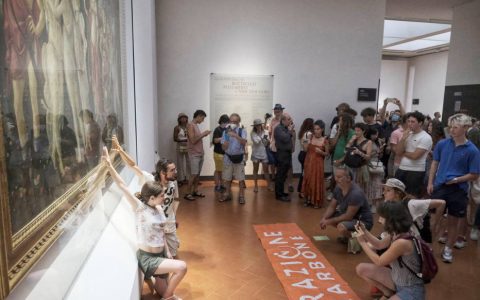
USP (University of So Paulo) remained as the best higher education institution in Latin America, but seven Brazilian universities dropped their position in the ranking of the British magazine The (Times Higher Education), a world reference in the analysis of university education. . The 2022 edition of the survey, released yesterday, included 59 Brazilian representatives. For the sixth year in a row, Oxford University in the United Kingdom occupied the first position on the list.
California Institute of Technology and Harvard University, both from the United States, were tied for second place. Stanford University and Cambridge University, from the US and UK respectively, complete the top 5.
The evaluation considers 13 indicators that measure the performance of institutions in research, teaching quality, quantity of citations in scientific articles, international projection, etc. For this edition, data was analyzed, including 108 million citations in more than 14 million scientific publications worldwide. A survey was also conducted with 22,000 academic representatives.
Budget difficulties, low internationalization and bureaucratic constraints have been pointed out by experts as barriers for Brazil to get a better placement in these rankings. Management Jair Bolsonaro It has been criticized for cutting funding for universities and research. To comment on the ranking results, the MEC (Ministry of Education) was yet to reveal itself till the publication of this article.
See below the fall of Brazilian universities in the rankings:
- UFSC (Federal University of Santa Catarina) – fell from a range of 601-800 last year to 801-1,000;
- UNIFESP (Federal University of So Paulo) – fell from the range of 601-800 last year to 801-1,000;
- PUC-Rio (Pontifical Catholic University of Rio de Janeiro) – fell from the range of 601-800 last year to 801-1000;
- UNB (University of Brasilia) – decreased from the range of 801-1000 last year to 1.001-1,200;
- Unesp (Universidade Estadual Paulista) – fell from the range of 801-1.000 last year to 1.001-1.200;
- UFPel (Federal University of Pelotas) – decreased from last year’s 801-1000 range to 1.001-1,200;
- UFRJ (Federal University of Rio de Janeiro) – fell from the range of 801-1000 last year to 1.001-1,200.
covid research
Due to the COVID-19 pandemic, the rankings reflect the role of universities in understanding and managing the health crisis. There has been a significant increase in the scores of institutions developing epidemiological surveys. AstraZeneca’s COVID vaccine, which is the most widely used worldwide including Brazil, topped the list from Oxford University.
Other health-focused universities have stepped up over the past year thanks to research on COVID. Among them, representatives from China, where the pandemic originated, Taiwan and Saudi Arabia. Generally speaking, not so many countries have entered the rankings before. In all, there were 1,662 universities from 99 countries and territories, an increase of 136 over the previous year.
According to the magazine’s editor Phil Batty, “It will be interesting to see how the US, UK and other major education systems can respond to the challenges of COVID-19, including a potentially profound impact on funding to attract and retain international academic talent.” positions.”
In Brazil, higher education institutions have had to restrict the use of their physical infrastructure, including laboratories and libraries, to respect quarantine rules, which is one of the strategies to halt progress. coronavirus. Most of the higher education institutions are yet to fully resume face-to-face activities.
The highlight of this year was China, which is growing rapidly in the latest editions of the survey. The Asian country achieved its best ever ranking, with two universities ranked 16th and ten entries in the top 200. They also had the best results in the history of Japan, South Korea, Russia, Singapore, New Zealand and Hong Kong.
Latin America, on the other hand, broke the representation record in the rankings with 125 universities. Brazil was the country with the most newcomers to the region, with nine institutions making the list for the first time, all down from 1,201st place.
Check out the nine Brazilian universities ranked by the best in the rankings below:
- USP (University of So Paulo) – Post: 201-250;
- UniCamp (University of Campinas) – Position: 401-500;
- UFMG (Federal University of Minas Gerais) – Position: 601-800;
- UFRGS (Federal University of Rio Grande do Sul) – Position: 601-800;
- UFS (Federal University of Sergipe) – Post: 601-800;
- UFSC (Federal University of Santa Catarina – Position: 801-1,000;
- UNIFESP (Federal University of So Paulo (UNIFESP) – Position: 801-1.000;
- Unifor (University of Fortaleza) – Position: 801-1,000, increased compared to previous year;
- PUC-RS (Pontifical Catholic University of Rio Grande do Sul) – Position: 801-1.000.



